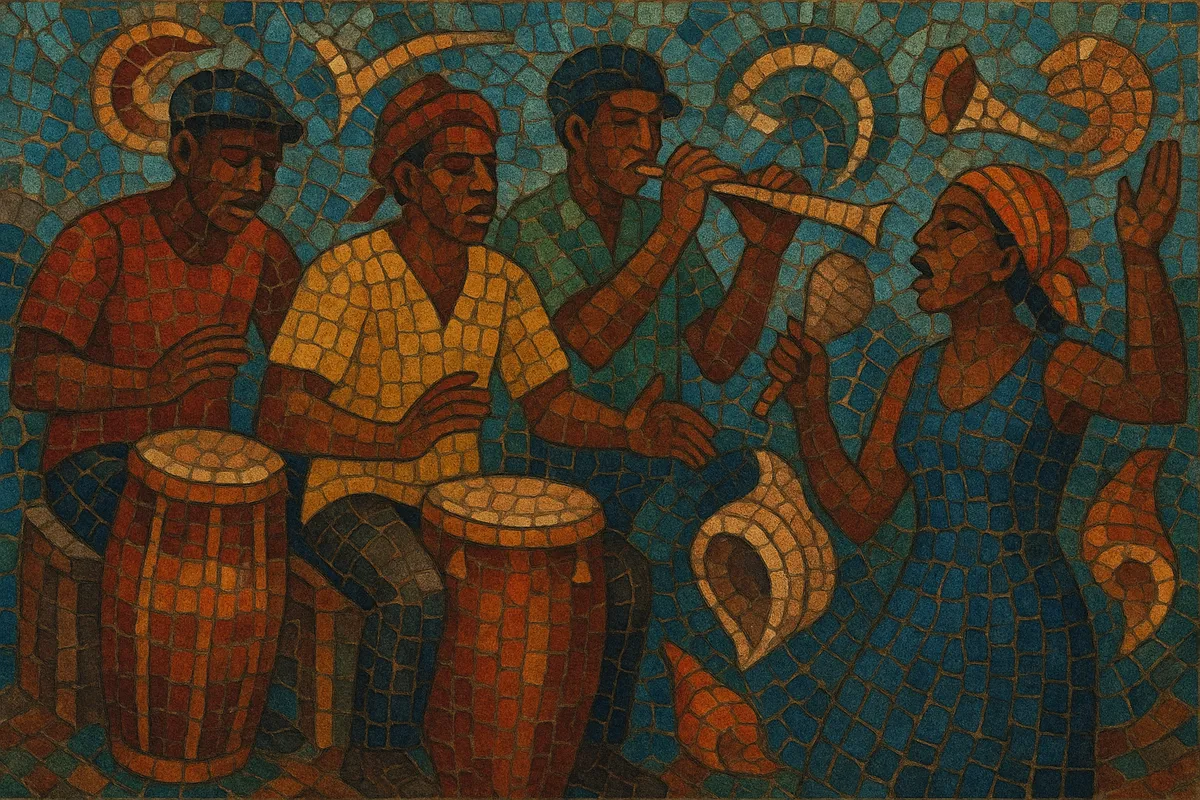Rasin (mizik rasin, meaning "roots music") is a modern Haitian style that fuses traditional Vodou ceremonial songs and street-processional rara with amplified rock, funk, and reggae instrumentation.
It centers on interlocking hand and barrel drums (tanbou manman, segon, boula), single-note metal trumpets (vaksen) and conch shells, layered call-and-response vocals in Haitian Kreyòl, and modal melodies that ride cyclical bass ostinatos.
The aesthetic is simultaneously spiritual and political: lyrics invoke lwa (Vodou spirits), collective memory, and social critique, while the grooves invite communal dance in carnivals, lakou (ritual yards), and concert stages.
After the fall of Jean‑Claude Duvalier in 1986, a broad cultural reawakening in Haiti encouraged artists to reclaim Vodou ceremony, rara street music, and folk rhythms as proudly public symbols. Amplified bands began blending these "roots" with rock and reggae, coining the scene mizik rasin. Early flagbearers like Boukman Eksperyans, RAM, and Boukan Ginen set the template: ceremonial drums and vaksen driving electric guitars, bass, and synths, with Kreyòl call‑and‑response and protest poetry.
Rasin surged in visibility through Carnival anthems and international festivals. Its outspoken social and political lyrics made it both an outlet for popular sentiment and, at times, a target for censorship during periods of instability (e.g., the 1991 coup d’état). Bands used the stage as a civic space, aligning spiritual devotion with community organizing and cultural pride.
Members of the rasin movement established hubs in Port‑au‑Prince, Miami, New York, Montreal, and Paris, collaborating with world‑music circuits while keeping ties to local lakou and Carnival traditions. Artists like Racine Mapou de Azor carried the style with ceremony‑centered performances; new ensembles (e.g., Lakou Mizik, Chouk Bwa) emphasized deep rhythmic research and cross‑genre collaborations.
Rasin’s vocabulary continues to inform Haitian popular music and EDM‑leaning styles such as rabòday, while bands refresh the sonic palette with dub, funk, and jazz harmonies. The core identity—Vodou‑rooted rhythm, communal voice, and socially conscious text—remains the genre’s compass.


